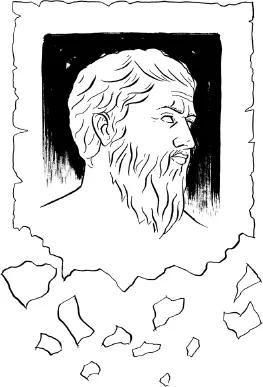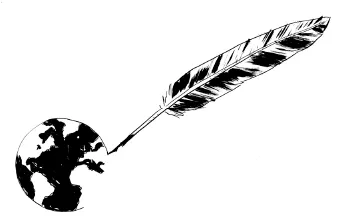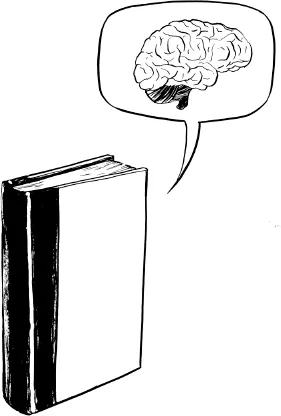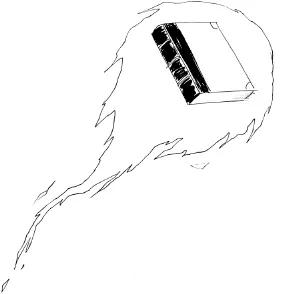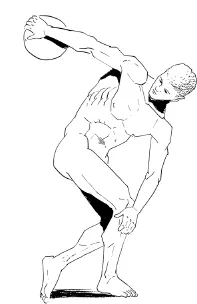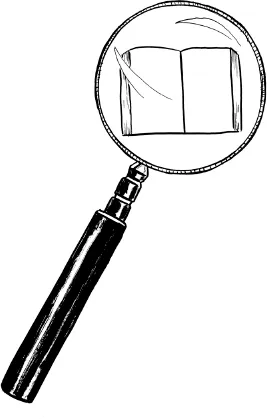![]()
Chapter 1
HUMANIST LITERARY THEORY
(and Other Old-Fashioned Topics)
Let's start with a quick overview of the past 2,000 years of literary theory.
We'll begin at the foundations of Western culture: the Greeks. Both Plato and Aristotle thought that literature (lyric and dramatic poetry and drama, no novels yet!) should be MIMETIC—a poem is a copy, representation, or imitation of something that exists in nature. By this logic, a good poem would be a poem that is accurate in copying nature.
For Plato, this was a problem. Plato argued that the natural world is itself only a copy of an ideal world of forms that exists in the abstract. Since only the ideal/eternal Forms can be perfect, the natural world is flawed and imperfect. A poem, then, is a copy of a copy, so doubly flawed. Thus, Plato banned poets from his Republic, because they told lies.
Plato
Aristotle wasn't quite so stern. His writings focus on the natural world (rather than abstract forms) in order to describe and classify all phenomena in it. So Aristotle didn't worry about mimesis so much. He believed that poetry and art could imitate the natural world, but that they add something in doing so—they make real world happenings have MEANING for audiences. Aristotle's idea is that art serves as supplement to the real world; it's a way of representing the real world that helps audiences better understand it.
The emphasis on MIMESIS raised problems, as you might see. Can a poet write about things not found in nature? What about imagination? Is nature “out there” for us to copy, or do we create “nature” in the act of writing about it?
Plato and Aristotle were the main voices in lit theory until the early modern age (Renaissance and after). In the 17th century, English philosopher John Locke asserted that the mind is a tabula rasa, or blank slate, until sensory perception puts experiences into our brains, which we then sort and collect and make sense of. Nothing exists in our minds, Locke maintained, except what comes through that sensory perception (and the secondary processes of ordering and drawing conclusions from it—which form consciousness). For literature, this meant that writers should focus on descriptions of the external world, trying to use words to replace sensory perceptions to fill up a mind seen as passive, like a sponge. Good literature was that which put good thoughts into your head.
The function of literature, from this perspective, is DIDACTIC—literature should tell you how to think correctly about people and things and the world in general. “Good” literature tells you good things; bad literature tells you bad, wrong, immoral things.
In the 18th century, philosophers began to refigure their concepts of the human mind, moving away from Locke's tabula rasa to the idea that the mind actively shapes and interprets sense data. Rather, they posited a “constitutive imagination,” or the mind's ability to create ideas whose whole is greater than the sum of their parts. A poem, then, didn't have to be a copy of nature, or of sense impressions—poets could make things up, imagine them, and then write down what they imagined.
As you might agree, this was a great development for literature and art! The purpose of art as imitating nature gave way to the idea of art as CREATION—and thus of the artist as a kind of God.
This gave rise, by the end of the 18th century, to the Romantic era and the idea that literature is an expression of an inner truth, a “deeper meaning.” The function of literature, in the Romantic view, is to be EXPRESSIVE of the complexity of the artist's inner feelings and thoughts, which could not be expressed any other way.
Good literature, though, was not just expressive—the author spilling his guts/vomiting on the page. It also had to be AFFECTIVE. It had to move the reader, get the reader to feel powerful emotions aroused by the author's words. Aristotle had articulated this function of literature in his discussion of catharsis (emotional purging) in tragedy.
The expressive and affective aspects of literature formed the basis for most literary study from the Romantic era until the last decades of the 20th century. This is what we call humanist literary theory.
Expressive and affective literary theory put new emphasis on the Author as creator—it's MY inner experience I have to express. This model also placed new emphasis on the Reader as the recipient of the author's creative genius and tortured emotions. This, too, contributed to the attention paid to “what literature does.”
Among the things a poem could do for, or give to, a reader:
- moral improvement
- knowledge/education of fact and history
- pleasure
- psychological insight
- catharsis
- an approach to the sublime (God, the divine, the inexpressible/unsayable)
- aesthetic appreciation
Each of these attributes or benefits gave rise to a branch of literary criticism and theory, including a method for evaluating what literature is good or great, and what is crap.
One other notable method developed in the early 20th century in Anglo American literary thought: FORMALISM, or what was then called New Criticism. Formalism rejected any analysis of the author or the reader, any expressive or affective notions of the function of literature. For formalists, a literary work is words on a page, nothing else. The job of the literature student or literary critic, they maintained, is to understand how the words on a page create meaning (real meaning, deeper meaning) without reference to anything outside the text. Formalism considered itself the only objective way of viewing a literary text; hence it became the main method taught by English departments. Academic pursuits, it was believed, should be modeled on the sciences; they should be objective, measurable, and fully explicable. Literary studies are often in danger of being called “subjective,” because they are based on personal taste or individual interpretation, rather than on objective fact.
To sum up: The humanist model presupposes that great literature is...
- a unique creation coming from the most profound inner experiences of an author
- a creation that can move readers emotionally and intellectually, to get them to understand themselves better
- a means of raising consciousness, for getting readers to think about themselves and the world differently
- a work that “withstands the test of time”—that speaks to all periods of history and all cultures because it addresses ideas and events common to all people at all times in all cultures
- an expression of “universal human truth” unaffected by history, ethnicity, geography, or anything else external to the text. The assumption is that human nature is unchanging, that people are pretty much the same everywhere, in all ages and all cultures, and that “we” all share something by virtue of our common humanity.
The humanist ideal of “great” literature also supports the idea of an individual “self” to which great literature speaks—the inner truths that make us who we are, our essential self. Even though all humans are essentially the same, sharing a common humanity, each one of us (in Western culture, anyway) is a unique individual, like no one else who has ever existed.
Now forget all that.
![]()
Chapter 2
STRUCTURALISM
The formalist method insists that a text makes its own meaning, without reference to the reader, the author, the morality, or the external world (or history or cultural formation of any kind). What you do in analyzing a text is “close reading”—looking at each word, phrase, sentence, or other element and deciding how that element contributes to the unified meaning of the whole piece. Such close reading is still one of the basic skills of reading literature; no interpretation of a text can be valid without evidence from the text to support it.
The quest for textual evidence to support an argument about a literary text may sound more like science than English. The critics who developed formalism in England and the United States in the 1940s were trying to make literary criticism more scientific, to take it out of the realm of mere per...

